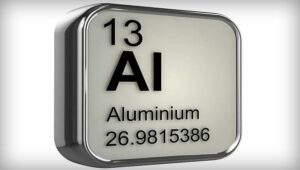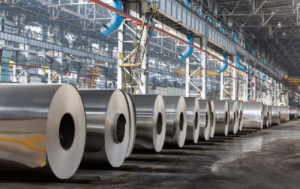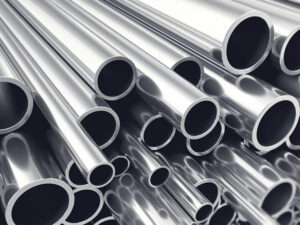
In January-November 2025, Ukraine increased imports of aluminum and aluminum products by 15.1% compared to the same period in 2024, to $470.783 million. In November, imports amounted to $38.698 million.
Exports of aluminum and aluminum products in January-November 2025 increased by 21.7% to $141.114 million. In November, aluminum exports amounted to $12.971 million.
In addition, Ukraine increased imports of aluminum and aluminum products by 21.7% in 2024 compared to 2023, to $446.006 million.
Exports of aluminum and aluminum products in 2024 increased by 27.4% to $124.408 million.
In 2023, exports of aluminum and aluminum products increased by 0.7% compared to 2022, reaching $97.616 million, while imports increased by 7.7%, reaching $366.463 million.
Aluminum is widely used as a structural material. The main advantages of aluminum are its lightness, malleability, corrosion resistance, high thermal conductivity, and the non-toxicity of its compounds.
In particular, these properties have made aluminum extremely popular in the manufacture of cookware, aluminum foil in the food industry, and for packaging. The first three properties have made aluminum the main raw material in the aviation and aerospace industries (recently, it has been replaced by composite materials, primarily carbon fiber). After construction and packaging production—aluminum cans and foil—the largest consumer of metal is the energy industry.

In January-October 2025, Ukraine increased imports of aluminum and aluminum products by 14.8% to $432.08 million, while exports grew by 21.4% to $128.14 million.
In October, aluminum imports amounted to $42.85 million, and exports amounted to $15.71 million.
For comparison, in 2024, aluminum imports increased by 21.7% to $446 million, and in 2023, by 7.7% to $366 million.
Aluminum is widely used as a structural material. The main advantages of aluminum are its lightness, malleability, corrosion resistance, high thermal conductivity, and the non-toxicity of its compounds.
In particular, these properties have made aluminum extremely popular in the production of kitchenware, aluminum foil in the food industry, and for packaging. The first three properties have made aluminum the main raw material in the aviation and aerospace industries (recently, it has been replaced by composite materials, primarily carbon fiber). After construction and packaging production—aluminum cans and foil—the largest consumer of metal is the energy industry.

The Experts Club analytical center has created a video analysis of global aluminum production in 1970-2024. Based on visual data from the video “Top 20 aluminum producers from 1970 to 2024” and confirmed statistical data for 2024, an overview of industry trends has been formulated.
Since the 1970s, primary aluminum production has gradually shifted from Europe and North America to Asia and the Middle East. At the dawn of the industry, Western Europe and the US accounted for a significant share of production. However, the following decades saw rapid capacity expansion in China, India, and the Middle East.
The video confirms that in 2024, the largest producer (China) controls about 60% of the world’s volume, while the top ten leaders account for more than 80% of production.
According to sources (Wikipedia, Visual Capitalist, NATO, World Population Review), aluminum production in the top ten countries in 2024 will look like this:
China — ~43 million tons.
India — ~4.2 million tons.
Russia — ~3.8 million tons.
Canada — ~3.3 million tons.
UAE — ~2.7 million tons.
Bahrain — ~1.6 million tons.
Australia — ~1.5 million tons.
Norway — ~1.3 million tons.
Brazil — ~1.1 million tons.
Malaysia — ~0.98 million tons.
Total global primary aluminum production in 2024 is estimated at approximately 72 million tons.
The world of aluminum production is becoming increasingly concentrated: China holds a dominant position, while other leading countries control a significant share. Countries with growing infrastructure, automotive, and construction sectors (India, Brazil, UAE) are showing dynamic growth.
The video is available on our YouTube channel –

Aluminum prices hit a nearly 3.5-year high on Tuesday.
The price of three-month aluminum futures on the LME rose 0.6% to $2,893.5 per ton by 6:40 p.m. and reached a high of $2,900.3 per ton during the session, the highest since May 2022.
Prices are rising amid limited supply in the short term and positive demand forecasts in the longer term, Trading Economics notes.
China, one of the leading aluminum producers, has confirmed its intention to prevent overcapacity in the industry, where fierce competition has contributed to lower producer prices.
The country’s aluminum production limit is 45 million tons per year, and it was expected to be exceeded this year.
Supply is also under pressure from problems at key plants, including the suspension of one of two electrolysis series at Iceland’s Grundartangi site due to electrical equipment failure.
Meanwhile, US-based Alcoa has announced that it will shut down its Kwinana plant in Australia due to declining bauxite ore quality.
On the demand side, high consumption in key, rapidly growing electrification sectors and the prospect of a trade agreement between the US and China are providing support.
For a more detailed overview of global aluminum production from 1970 to 2024, see the video on the Experts Club YouTube channel.

In January-August 2025, Ukraine increased imports of aluminum and aluminum products by 17.6% to $344.293 million (in August – $44.034 million).
Aluminum exports increased by 19.2% to $98.922 million (in August – $13.215 million).
Aluminum is widely used as a structural material. The main advantages of aluminum are its lightness, malleability, corrosion resistance, high thermal conductivity, and the non-toxicity of its compounds.
In particular, these properties have made aluminum extremely popular in the manufacture of kitchen utensils, aluminum foil in the food industry, and for packaging. The first three properties have made aluminum the main raw material in the aviation and aerospace industries (recently, it has been replaced by composite materials, primarily carbon fiber). After construction and packaging production—aluminum cans and foil—the largest consumer of metal is the energy industry.

In January-July 2025, Ukraine increased imports of aluminum and aluminum products by 20.1% to $300.252 million (in July – $45.832 million). Exports of aluminum and aluminum products during this period increased by 33.1% compared to the same period in 2024, to $85.707 million (in July – $14.839 million).
Aluminum is widely used as a structural material. The main advantages of aluminum are its lightness, malleability, corrosion resistance, high thermal conductivity, and non-toxicity of its compounds. In particular, these properties have made aluminum extremely popular in the manufacture of kitchen utensils, aluminum foil in the food industry, and for packaging. The first three properties have made aluminum the main raw material in the aviation and aerospace industries (recently, it has been replaced by composite materials, primarily carbon fiber). After construction and the production of packaging—aluminum cans and foil—the largest consumer of aluminum is the energy sector.